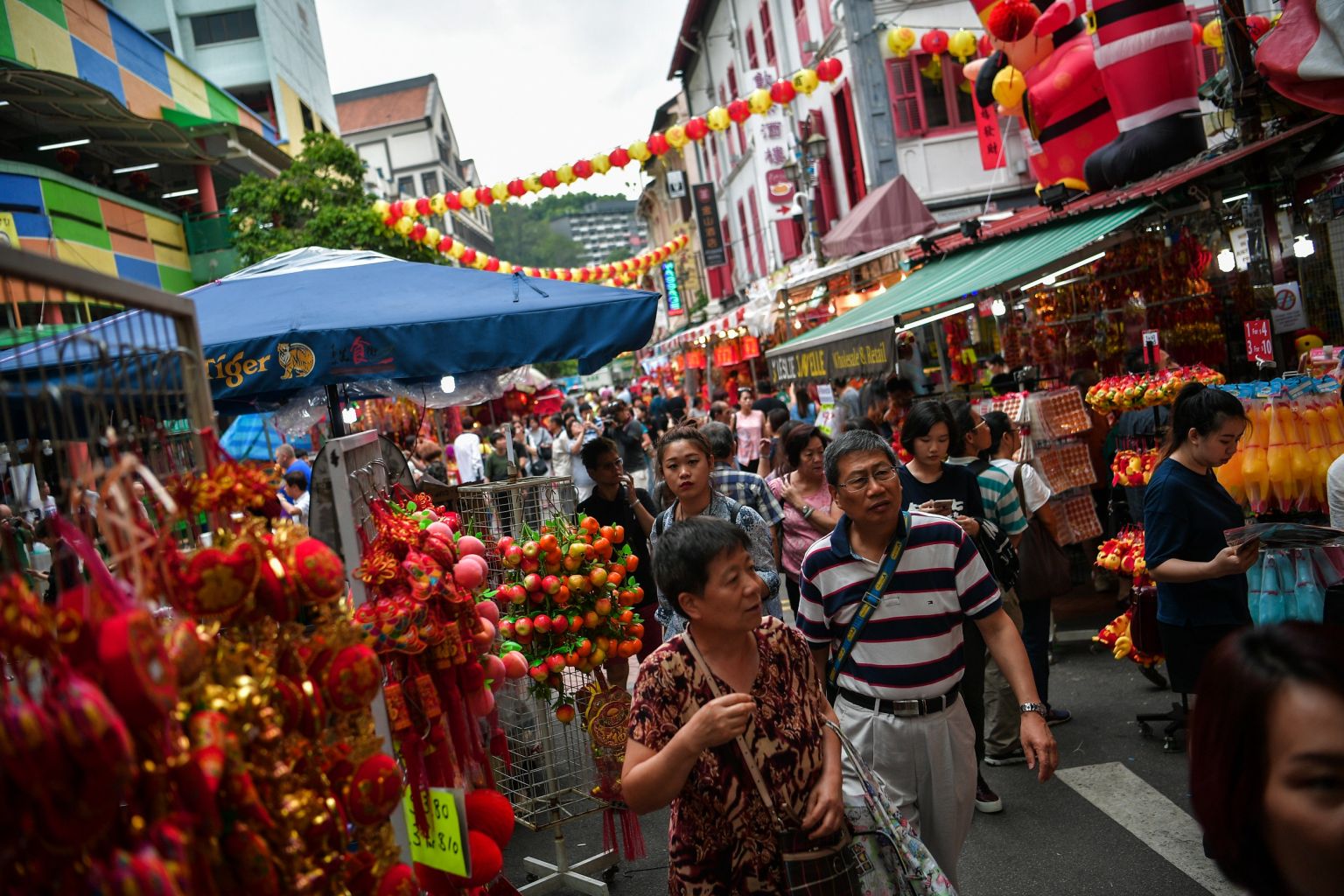Tourist arrivals, spending in Singapore hit record high for 2nd straight year; China top source of visitors
Sign up now: Get ST's newsletters delivered to your inbox

Tourists from Shanxi in Chinatown Food Street, on Jan 10, 2017. Visitors to the Republic spent 9 per cent more on shopping between January and September 2017 compared with the same period in 2016.
PHOTO: ST FILE
Tiffany Fumiko Tay
Follow topic:
SINGAPORE - Singapore hit a record high in tourist arrivals and spending for the second year in a row last year, with China overtaking Indonesia as the top source of visitors for the first time.
The overall number of arrivals increased year on year by 6.2 per cent to 17.4 million, while tourism receipts rose by 3.9 per cent to $26.8 billion, according to preliminary estimates released by the Singapore Tourism Board (STB) on Monday (Feb 12).
The jump in spending was driven by the growth in arrivals across all 10 of Singapore's top markets, including high-spending ones such as China, South Korea and the United States.
Chinese tourists were the biggest spenders for the third year in a row, spending $3.08 billion, while tourists from Indonesia spent $1.98 billion, based on estimates for January to September 2017.
Visitors from Britain and the US meanwhile posted the highest growth in spending.
Visitors to the Republic spent 9 per cent more on shopping between January and September 2017, compared with the same period in 2016, thanks to higher spending on confectionery, fashion accessories and health and wellness products.
Sightseeing, entertainment and gaming enjoyed a 6 per cent boost, while the food and beverage sector saw a 5 per cent dip as tourists chose to forgo fine dining for casual eating and hawker fare.
The top three largest markets for visitor arrivals were China, Indonesia, and India, where the STB has been courting tourists from Tier 1 and Tier 2 cities.

There were an estimated 3.23 million tourists from China in 2017, compared with 2.95 million from Indonesia, which is traditionally Singapore's top source of visitors.
India edged out Malaysia for third place and saw the highest growth rate, at 16 per cent, while Hong Kong posted the largest decline (-13 per cent) for the second year in a row.
Speaking at a media conference on Monday, STB assistant chief executive Chang Chee Pey said that growth in the US and British markets was driven in part by increased air connectivity, such as the launch last year of low-cost carrier Norwegian's service between London and Singapore.
"This makes air travel a lot more affordable, especially for leisure travellers," he said.
Growth in Hong Kong's budget carrier network, however, also lured travellers away from Singapore to destinations such as Japan and South Korea, said Mr Chang.
Higher spending by visitors on accommodation and shopping helped the business events sector to grow by 4 per cent to $3.15 billion for the first three quarters of 2017, despite a 5 per cent dip in the number of these travellers to 1.75 million.
Meanwhile, the cruise industry continued its double-digit year-on-year growth from 2016, with passenger traffic increasing 17 per cent last year to 1.38 million, a record high for the third year running.
STB chief executive Lionel Yeo said that the agency was "pleasantly surprised" by the better-than-expected performance.
"The combined efforts of STB and our industry partners yielded strong results, against a context of better-than-expected global economic recovery, continued growth in Asia-Pacific travel and increased flight and cruise connectivity to Singapore," he said.
With the favourable global economic outlook and Asia-Pacific tourism poised for further expansion, the STB is generally optimistic about tourism prospects for the year ahead, the agency said.
But geopolitical tensions that may affect consumer travel sentiments and intensifying regional competition remain challenges, said Mr Yeo.
The growth of tourism in the Asia-Pacific, for example, may be a double-edged sword for Singapore.
"On the one hand, it is going to grow as a source market for tourism; as incomes rise, people from the Asia-Pacific are going to travel more. At the same time, it poses competitive threats for Singapore because as economies develop, a lot of them (will) also want to develop themselves as tourism destinations," said Mr Yeo.
"So I think within this dynamic of a growing tourism pie, Singapore has to make sure that we continue to put in good efforts to get our share of the growth."
For 2018, the STB forecasts tourism receipts to grow by between 1 per cent and 3 per cent, and visitor arrivals to be in the range of 17.6 million to 18.1 million, an increase of 1 per cent to 4 per cent.

